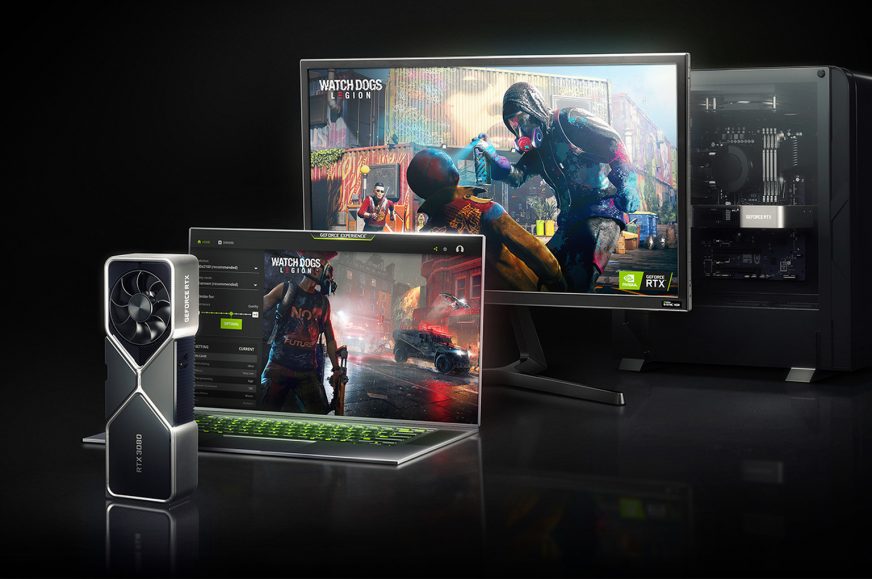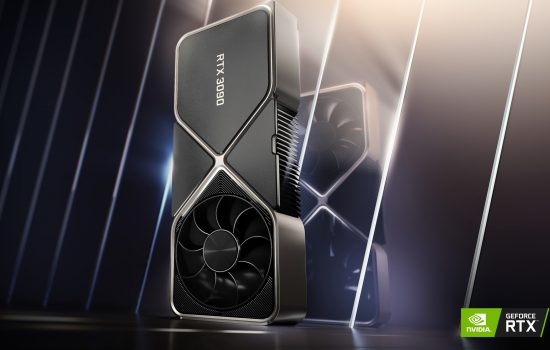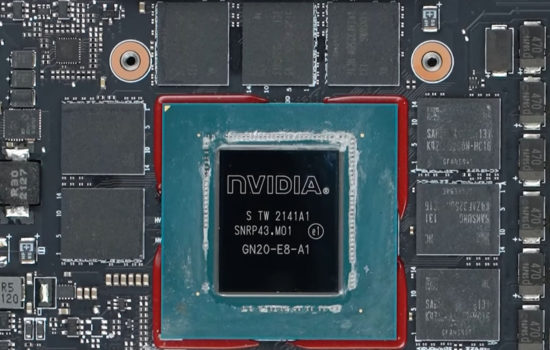Nvidia GeForce RTX 3080, RTX 3070 and RTX 3060 for notebooks
So far, Nvidia has only released the GeForce RTX 3000 graphics cards for desktop. But this year, it should soon come to laptops, which will bring the performance of the new generation of 8nm Ampere chips into mobile. According to leaks, GeForce RTX 3060, RTX 3070 and RTX 3080 mobile GPUs should be released soon, and we already have their specifications including the number of shaders and clocks.
The fact that the release of the GeForce RTX 3000 mobile is approaching has been indicated by a number of leaks. Sightings of notebooks equipped with one of the three above-mentioned mobile GPUs began to appear on the Internet. It is therefore likely that Nvidia could unveil them in the coming weeks, probably at CES 2021, which will take place virtually and starts on January 11. NotebookCheck (via VideoCardz) has already published more detailed specs, so we can see what Nvidia is up to.
GeForce RTX 3080
The fastes AMpere SKU for notebooks is going to be the GeForce RTX 3080, which is based on the 8nm GA104 chip – not GA102 like the desktop card. This model will use a fully active version that is not being sold in the desktop lineup and thanks to that the GPU will provide 6144 shaders (48 SM blocks, 48 RT cores and 192 tensor cores). This version of the chip is said to have the designation GA104-775 and the internal designation of the whole graphics card is GN20-E7.
According to NotebookCheck, the card will have a GPU frequency of 1.1 GHz to 1.7 GHz – these are probably boost values. How fast it will be depends on how high will the laptop manufacturer set the power draw limis in the particular design. For conventional models (“Max-P”), the TDP can vary from 115 W to 150 W. The more power efficient and slower version, RTX 3080 “Max-Q”, should have a TDP of 80–90 W. The lower the power draw, the more the GPU is going to be underclocked, so the performance will naturally be lower. For comparison, the desktop RTX 3070 could actually be faster than this mobile RTX 3080 – because desktop RTX 307’s0 boost clock is 1.73 GHz (at 5888 shaders) and it routinelly boosts to up to around 1900 MHz.
What is also interesting about this graphics card is the memory. A 256-bit bus with GDDR6 memory will be used (so we are talking 448 GB/s of bandwidth should the 14.0GHz frequency be kept). But while desktop Ampere cards have a capacity of just 10 GB (and the comparable RTX 3070 has 8 GB), the mobile RTX 3080 is to be available with 8 GB of memory, but optionally also with 16 GB.
The GPU will be able to connect to the system via PCI Express 4.0 – this is likely to be used with 10nm Intel Tiger Lake-H processors. It’s currently unknown whether AMD Ryzen 5000 mobile (“Cezanne”) will also support PCIe 4.0, so it is possible that the older PCIe 3.0 will be used with them. However this will similarly as with the desktop RTX 3000 not be a significant bottleneck, especially when we are talking about only the GA104 on the top of the lineup.
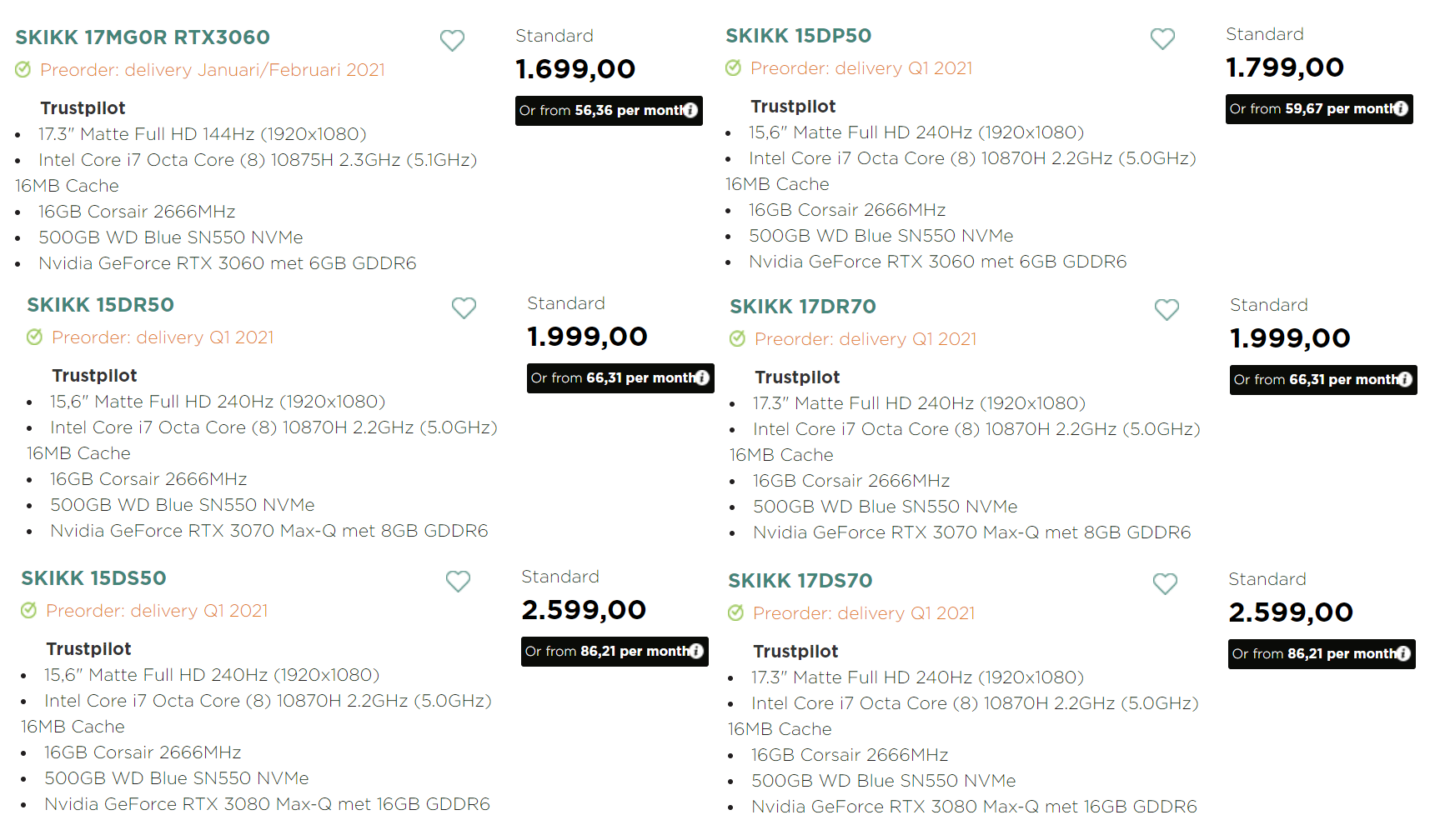
GeForce RTX 3070
The second model in the lineup will also be based on the GA104 GPU, this time in the GA104-770 version. It will be cut down to only 5120 shaders (40 SMs/RT cores, 160 tensor cores). The internal designation of the card is reportedly GN20-E5. The graphics card will retain a 256-bit memory bus also with GDDR6 memory, but in this case, only 8GB capacity will be offered.
The frequency will once again vary from laptop to laptop depending on the power draw selected by the manufacturer. The range should be from 1.1 GHz to 1.62 GHz. For comparison, the desktop RTX 3060 Ti has only 4864 shaders, but its boost clock is 1.67 GHz (and in games it reaches about 1850–1920 MHz). The TDP of these cards will be the same as on the mobile RTX 3080 – the Max-P version’s TDP can be set from 115 W to 150 W, while the more power efficient Max-Q’s TDP will be in 80–90 W range. Based on this, it is possible that the difference between the RTX 3070 and RTX 3080 might be smaller than you would expect, because the power draw will be the bottleneck. If an RTX 3080 is set to a lower TDP in one laptop and an RTX 3070 is set to 150 W in another, the cheaper GPU could end up faster.
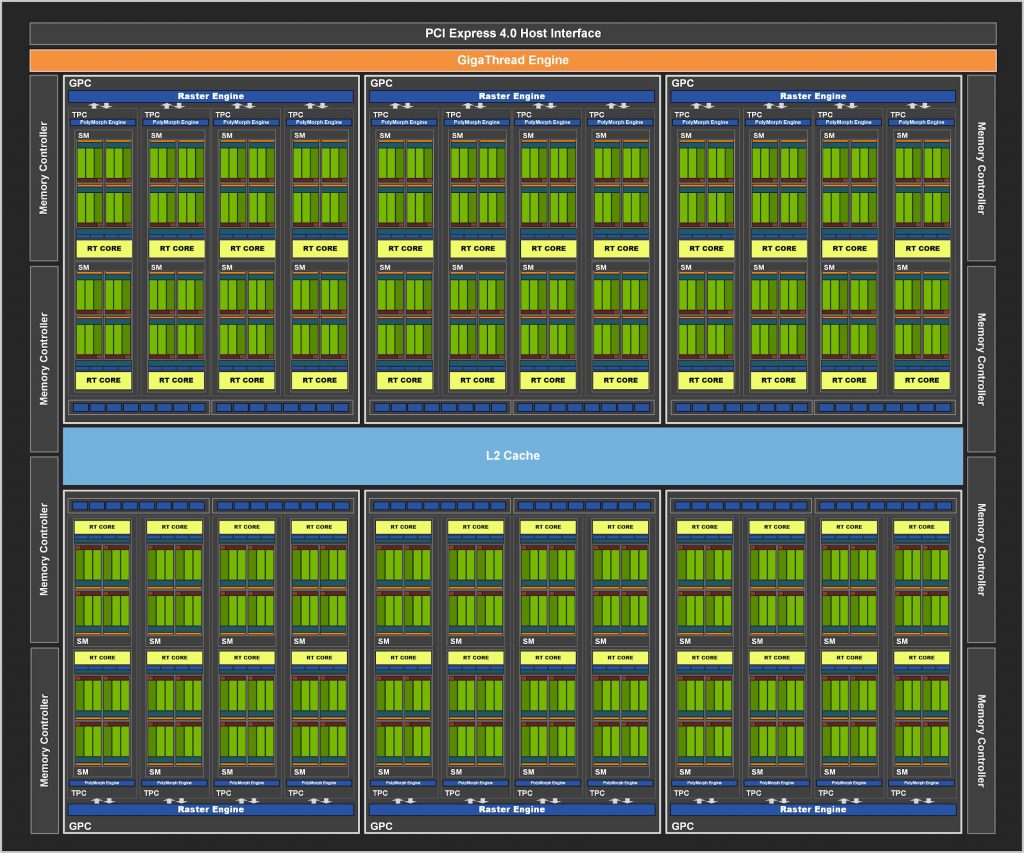
GeForce RTX 3060
The third model will be derived from the GA106 chip, same as the desktop RTX 3060. The laptop version will offer 3072 shaders, which mighty be the fully active configuration of the die. In that case GA106 would contain 24 SM blocks (and 24 RT cores, etc.). The memory bus is 192-bit and will again be equipped with GDDR6. The capacity should be 6 GB, a 12 GB option is not mentioned anywhere. With 14.0 GHz memory, the bandwidth would be 336 GB/s (and 384 GB/s if Nvidia used 16.0 GHz). NotebookCheck does not specify the RAM frequency anywhere, so we have no idea yet.
The GPU frequency should be between 0.9 and 1.7 GHz on this SKU. Again, it will depend on the power draw that the laptop manufacturer selects. Conventional Max-P versions willhave a TDP of 80 to 115 W, Max-Q versions will be throttled to 60–70 W (hence the minimum clock speed being lower than in higher models).
Based on the above, it seems that the desktop and mobile versions of GeForce with the same designation again won’t offer quite “the same” (or better said comparable) performance, which was something Nvidia liked to tout a few generations back. If these specifications are confirmed, then the mobile GeForce RTX 3080 will be more similar to a desktop GeForce RTX 3070 – although the performance could possibly be even lower in practice (at least for versions with less than the maximum TDP). The mobile RTX 3070 looks more like the desktop RTX 3060 Ti in turn. The GeForce RTX 3060 could be more equivalent to its desktop counterpart, but we can’t tell at this time as the desktop version hasn’t been released yet.
Release on January 12?
The release of these graphics cards is said to take place on January 12. On this day, Nvidia is organizing a special virtual event (“Special GeForce broadcast”), likely intended exactly for the announcement of these cards.
English translation and edit by Lukáš Terényi





